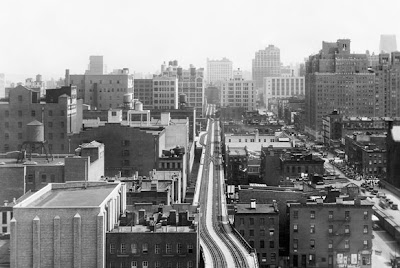The "United in Victory" association, the first major secret society in Chinatown, was based here for decades. In 1898, roughly 12% of Chinatowns residents were said to be members. A war stated with rival On Leong Tong when they tried to storm this building on October 7th, 1924; by the time things quietened settled down, 70 people were reported dead.
No 15 housed the command of Hip Sing Associates Inc - a thinly disguised corporate trading entity for the Hip Sing Tong.
From about 1905 until 1911, 13, Pell Street was the address of Sing Dock, the "Scientific Killer," chief hitman of the Hop Sing Tong. He was known for methodically planning his murders, including the Chinese Theater massacre that left four dead. He was killed in 1911 at the Hip Sing headquarters across the road at 16 Pell Street.
King Son Cafe, at no. 11, was the principal hangout for the Flying Dragons, the street gang affiliated with the Hip Song Tong.
The building at no. 10 served as the Hip Sing's original headquarters when they came to New York City in the 1890's. It was also an opium den.
+brothel.jpg) On the corner of Pell Street and 18 Bowery (above) is the oldest surviving townhouse in Manhattan, it was built sometime between 1785 and 1789 - in Georgian mixed with foreshadowing of Federal style. In the 1830's and '40's it housed a brothel - which cannot be accredited to the Hip Sing as it was before their time!
On the corner of Pell Street and 18 Bowery (above) is the oldest surviving townhouse in Manhattan, it was built sometime between 1785 and 1789 - in Georgian mixed with foreshadowing of Federal style. In the 1830's and '40's it housed a brothel - which cannot be accredited to the Hip Sing as it was before their time!




.jpg)











































